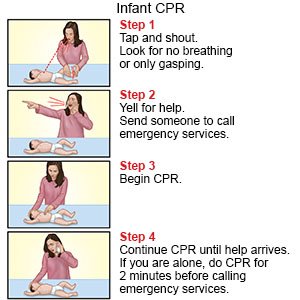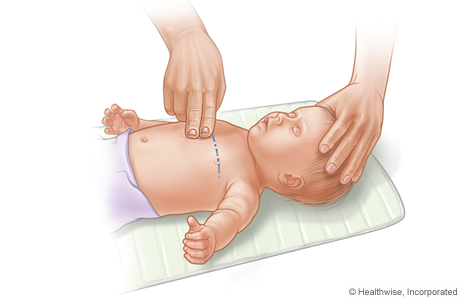Techniques and Best Practices Every Parent Should Know
When it comes to the safety of our little ones, every parent, caregiver, or anyone who spends time with infants needs to know what to do in an emergency. Infant CPR can make the difference between life and death, and learning these techniques could save your baby’s life one day.
In this article, we’ll walk you through the essentials of infant CPR, including step-by-step instructions, the 2-finger technique, and the unique 15-2 CPR ratio for infants.
Whether you’re a new parent or just want to be prepared, this guide will give you the knowledge you need.
How Do You Perform CPR on an Infant?
Step-by-Step Instructions
Knowing the proper way to perform CPR on an infant is crucial. Here’s how you can help in a life-threatening situation:
Assess the Situation:
Before jumping into action, take a moment to check if the infant is responsive. Tap the baby gently and shout their name. If the baby doesn’t respond and isn’t breathing (or is only gasping), it’s time to perform CPR.Position the Infant:
Place the baby on a firm, flat surface, like a table or the ground. Lay the baby on their back, ensuring they’re safe from any potential hazards.Chest Compressions:
Use two fingers to perform chest compressions in the center of the baby’s chest, just below the nipple line. Press down about 1.5 inches deep (about one-third of the chest depth). This should be done rapidly, at a rate of 100-120 compressions per minute.Rescue Breaths:
Next, use your mouth to form a seal around the baby’s nose and mouth. Gently blow into their mouth until you see the chest rise. Each breath should last about one second.Frequency of Compressions and Breaths:
The CPR ratio for infants is 30 chest compressions followed by 2 rescue breaths. Keep alternating between compressions and breaths until the baby starts breathing on their own or emergency help arrives.Important Precautions:
Be mindful of not over-ventilating (blowing too forcefully) or using excessive pressure during chest compressions. Always perform CPR gently and with the baby’s safety in mind.For further insights on CPR techniques, you can also check out a detailed guide on How to Perform Adult CPR at Home Step by Step and How to Perform CPR at Home Without Training, which may provide useful knowledge for handling CPR in different situations.
What Is the 2-Finger Technique for Infant CPR?
The 2-finger technique is the method of using two fingers to perform chest compressions on an infant. This approach is specifically designed to apply just the right amount of pressure to the baby’s chest.
Since an infant’s chest is much smaller and more delicate than an adult’s, using two fingers helps avoid unnecessary pressure on fragile ribs or internal organs. The technique ensures that the compressions are effective without harming the baby.
How to Apply the 2-Finger Technique:
Here’s a quick breakdown of how to apply the 2-finger technique:- Place your two fingers in the center of the infant’s chest, right below the nipple line.
- Press down about 1.5 inches deep at a rate of 100-120 compressions per minute.
- Ensure that your hands remain in position without shifting or slipping to maximize effectiveness.
If you're also caring for older children, consider reviewing How to Perform Children’s CPR at Home for additional guidance on CPR techniques tailored to kids.
Why Is It 15-2 for Infant CPR?
The CPR ratio for infants is 15 chest compressions followed by 2 rescue breaths. This is different from the adult CPR ratio, which is typically 30 compressions to 2 breaths.
Why 15-2?
The reason behind the 15-2 ratio is to provide rapid circulation and oxygen to the baby’s vital organs. Since infants have smaller lungs and a faster metabolism, they need a higher frequency of chest compressions to maintain proper circulation and oxygenation.Conclusion
In summary, knowing how to perform infant CPR is essential for any parent or caregiver. By following the correct steps—performing 30 compressions followed by 2 breaths, using the 2-finger technique for gentle yet effective compressions, and applying the 15-2 ratio—you can confidently respond in an emergency and possibly save a life.
While this guide is a great start, it’s important to seek formal CPR training from certified instructors. By taking a free CPR course, you’ll not only be more confident in handling emergencies but also be prepared for situations where every second counts.
If you haven’t already, consider taking a class today to make sure you’re ready for any situation!




